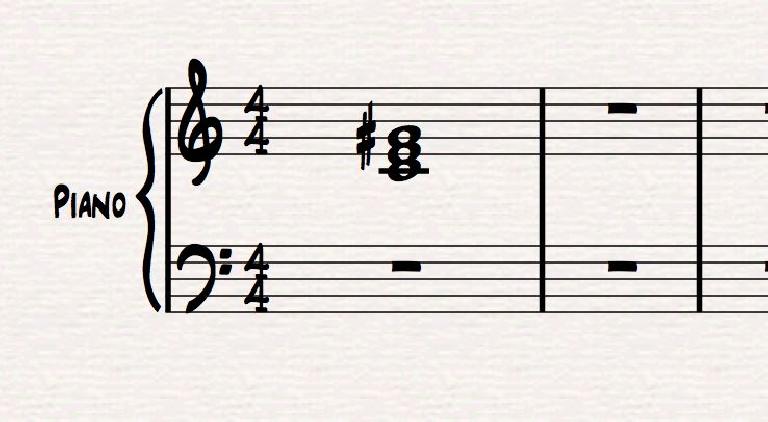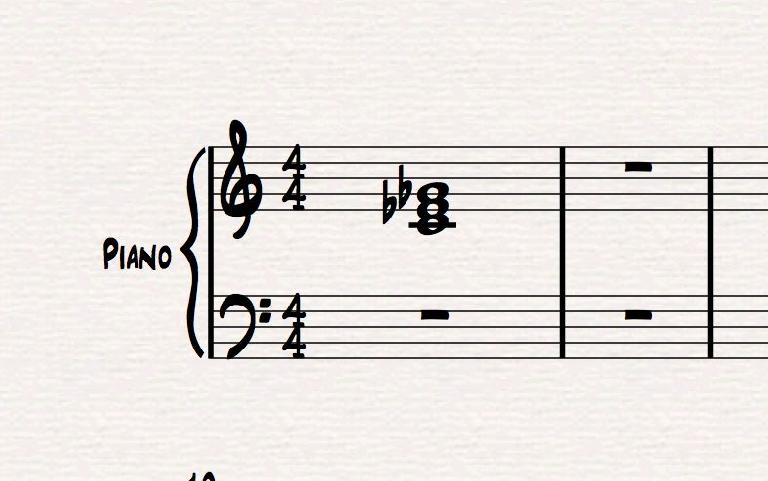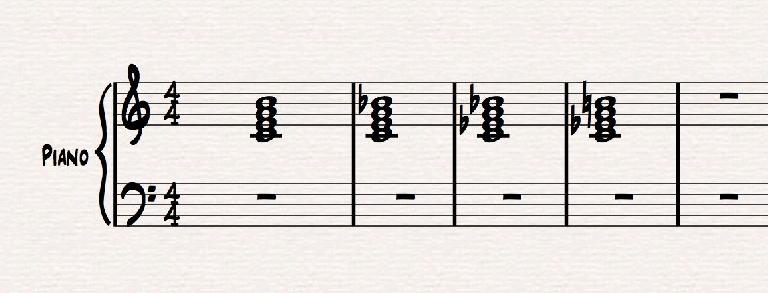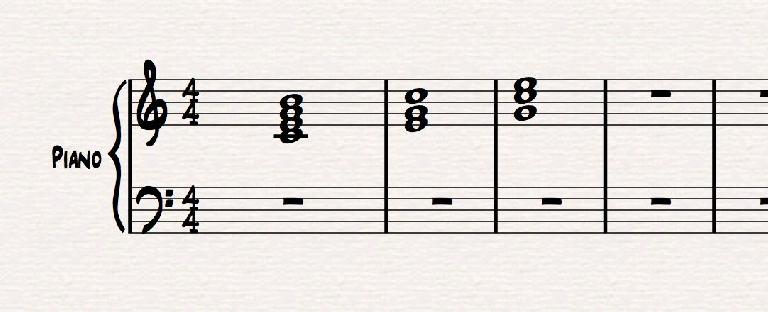When writing tunes, many budding songwriters don’t often go beyond major and minor. After all, they’re the two harmonic qualities we all often learn first and probably the simplest to understand. More sophisticated songwriting, however, goes beyond the simple diatonic choices, and there are a lot more choices out there than your standard ‘Maj’ and ‘Min’ chords! Let’s look at four types of chords that you likely aren’t using enough in your songwriting.
Augmented Reality
Augmented chords are pretty easy to understand and simple to construct. Take a simple major chord (a root, major 3rd, and a 5th) and raise the top note. The distance between the root and the top note now becomes 8 half steps, and you’ve got an augmented chord. Listen to the dissonance involved in stacking 2 major third intervals on top of each other.
Augmented chords are great for conveying a sense of motion. They definitely don’t ‘feel’ like a chord you end on, but they definitely feel like they are going somewhere. Try using an augmented I chord after a major one, then follow it up with a IV chord. In other words, use a C, then a C augmented, then an F chord. You can hear that top note being ‘pulled’ towards the third of the F chord.
Diminished and Half Diminished
When I think of diminished chords, I’m often reminded of the Spinal Tap concept of ‘none more black’. Diminished chords are even darker than minor chords, and this is because they stack two minor thirds on top of one another. What’s darker than a minor third? Well, 2 minor thirds, of course!
To make a diminished chord, make a simple minor chord, then lower the top note (the 5th of the chord). You’ll hear tension, darkness, dissonance, and you’ll love it! The distance between the lowest and highest note is now a tritone, a very dissonant interval that really ‘sticks out’. A clever way to work in a diminished chord into your repertoire is to play a major one, then simply move the root up a half step. Take a C major chord, move the C up to a C sharp but leave the other notes intact, and you’ve got a C# diminished. This chord will really want to ‘move’ to a D minor chord, but it’s not required!
If you add a minor seventh to this chord, it becomes a half diminished chord. For a fully diminished seventh chord, you’ve actually got to lower the 7th a half step below minor. This gives you 4 minor thirds stacked on top of one another. Wow! What’s darker than that? Only Nigel Tufnel knows…
Types of Sevenths
Perhaps all that talk of sevenths in the diminished section made your head spin a bit. Let’s break down 7th chords. A typical triad chord is made up of three notes—a root, third, and fifth. If you add one more note, a third above the fifth, you get a seventh chord. Seventh chords have 4 notes, and there are a few types of them, depending on how you build the seventh and what kind of chord you are building it on.
If you stay diatonic and add the seventh note of the scale above a major chord, you’ll have a ‘Major Seventh Chord’. This is a major chord, with a major seventh, and it has a bit of a jazzy sound. If you have a major chord and you add a minor seventh (lowering the seventh by a half step) you’ll have a ‘Dominant Seventh Chord’. This is a major chord with a minor seventh. It will sound a bit bluesy in comparison to the major one.
If your chord is minor, and you add a minor seventh on top of it, then you’ve got a ‘Minor Seventh Chord’. This can trend jazzy or rock sounding, and you can improvise with the dorian mode over it for some pretty fun results (see our article on choosing scales and improvising for some tips!). Finally, with a minor chord you can also add a major seventh for a ‘Minor Chord Maj 7th’ tonality. This one is pretty ‘out there’, and it can really grab the listener’s attention!
Inversions
Inversions are a fantastic way to use your intended harmony but in a different context. Perhaps you feel that a C chord is the perfect chord for the song at that point, but you’ve been using a C chord for a while and wish you could change things up slightly. An inversion is when you take the same chord, and rearrange the notes so that the root of the chord is no longer on the bottom.
Take a look at this example of three different iterations of the C chord. The first is a root position chord, and the C is on the bottom. The second is a first inversion C chord and the root has been moved to the top—the third of the chord is on the bottom. The third is a second inversion chord and the fifth of the chord is now on the bottom. All three of these chords are C chords, but they all sound different.
I’ll often use an inversion when I’m going back to a chord in the middle of a phrase and don’t want to give a sense of ‘finality’. Inverted chords also help to convey motion, so using them mid-phrase can let you land on a chord, but keep things moving harmonically. They also help if you find yourself ‘sitting’ on a single chord for a long time. Instead of 4 measures of C, why not do two measures of C, and two measures of C over an E bass?
Mix it Up
It can be very easy to ‘fall into’ the trap of only using major and minor chords in songwriting. We often get so excited by a catchy melody, a clever chord progression, or a neat hook and forget that there are more options out there besides major and minor. Revisit some of your work and think about adding some harmonic color with alternative chords!






 © 2024 Ask.Audio
A NonLinear Educating Company
© 2024 Ask.Audio
A NonLinear Educating Company
Discussion
Want to join the discussion?
Create an account or login to get started!